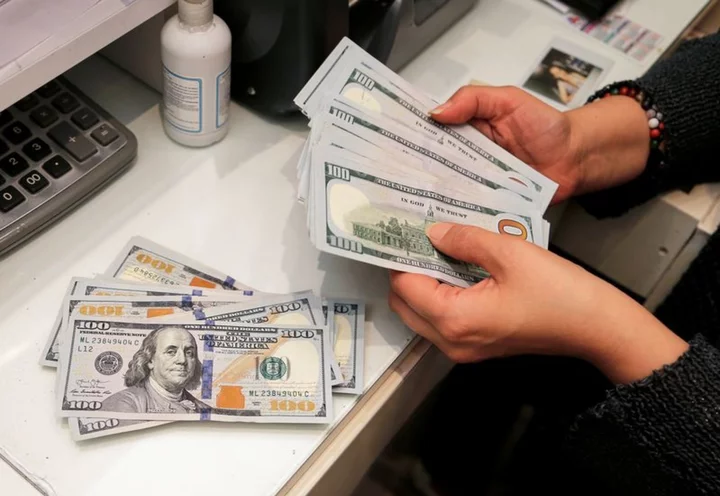U.S. Federal Reserve policymakers are increasingly taking the view that the rising bond yields that are tightening financial conditions in the way they have been seeking are due less to market expectations of further Fed rate hikes but rather to a variety of other factors, allowing them to do less with their own policy rate than otherwise.
Fed Chair Jerome Powell nodded to that potential on Thursday in remarks to the Economic Club of New York, saying he agreed "in principle" that the sharp run-up in yields could obviate the case for more rate hikes.
One of the key factors he and others at the Fed point to is the return of the "term premium" as an influence in bond yields, a fundamental driver that has been largely suppressed for a decade or more through a long run of low interest rates that followed the 2007-2009 global financial crisis and then the pandemic.
A bond yield can be decomposed into three elements: Expectations for what the Fed does with short-term rates; a premium for expected inflation; and a term premium. Essentially a term premium is the added compensation investors expect for the unknowns associated with holding longer-term debt, and it also wraps in factors including risk preferences, views about the economy and global financial conditions.
The Fed's efforts following the financial crisis to keep all borrowing costs low - not just those short-term ones it controls directly - all but eradicated the term premium because the central bank was so determined to keep rates from climbing and further hampering what was a slow recovery from the crisis.
Through much of the first year of the tightening campaign kicked off in March 2022 Fed officials periodically bemoaned that long-term rates were not rising enough to complement their own rate hikes. Bond investors instead remained focused on expectations widely held at the time that the Fed would over-tighten, cause a recession and would quickly cut rates to shield the economy from harm.
That dynamic has shifted with investors having finally recognized the Fed's strong commitment to bring inflation back to its 2% target, and willingness to accept a slowing economy to get there.
Term premiums cannot be directly observed but a number of models for them exist. A New York Fed model shows the term premium for the benchmark 10-year Treasury note has climbed by more than a percentage point since the start of the third quarter. Parked squarely in negative territory since 2021 and for much of the decade before the pandemic, it recently clawed back above the zero percent line and is near the highest level since 2015.
Swiftly rising term premiums can impact other assets, such as stocks, and can act to tighten financial conditions on their own, a risk the Fed has occasionally flagged in its twice-yearly reports to Congress.
"A sudden rise in term premiums to more normal levels poses a downside risk to long-maturity Treasury prices, which could in turn affect the prices of other assets," the Fed said in its July 2017 Monetary Policy Report, a period during which term premiums were below zero.
On Friday, the 10-year note yield was just below 5%, a level it has not exceeded since 2007. The price of the most current issue of that security, which debuted in mid-August near par, has fallen to around 91.5 cents on the dollar. Over the same period, the S&P 500 Index has fallen 5%.
Dallas Fed President Lorie Logan - who for years ran the New York Fed's open market operations and as such has deep familiarity with fixed income markets - spoke extensively about the shift in Treasury term premiums in remarks earlier this month.
She made perhaps the most explicit case for how that change may give the Fed more flexibility as it nears the end of a campaign that has seen it lift its policy rate from near zero to the current range of 5.25% to 5.50%.
"Financial conditions have tightened notably in recent months. But the reasons for the tightening matter," she said in a speech to the National Association for Business Economics annual convention. "If long-term interest rates remain elevated because of higher term premiums, there may be less need to raise the fed funds rate."
(Reporting by Dan Burns; Editing by Andrea Ricci)









